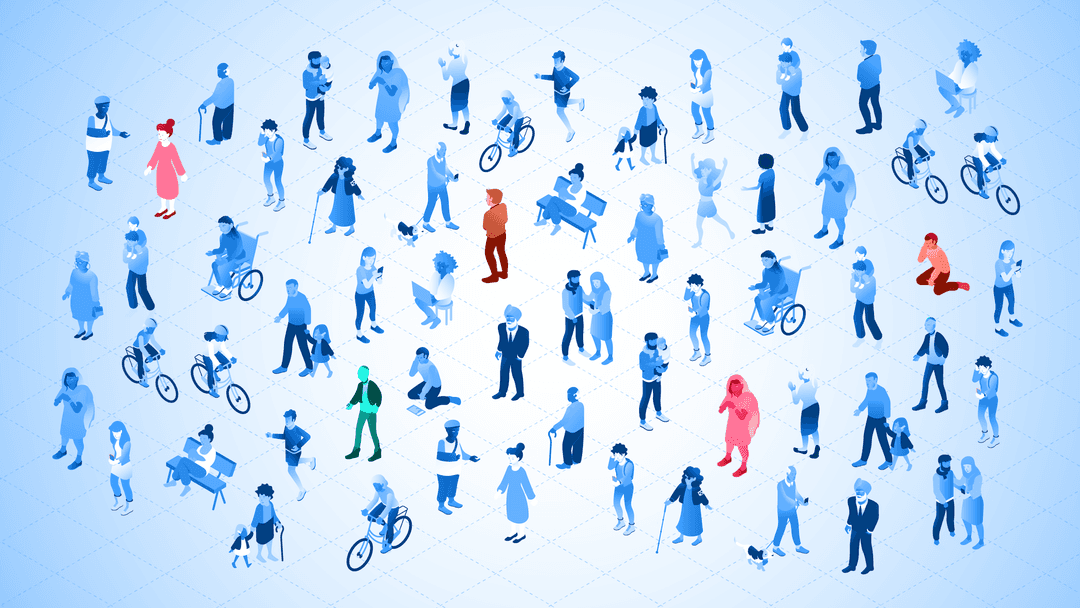What is a rare disease?

National Rare Disease Day 2025 will take place on Friday, February 28th. It’s a day that is important to create rare disease awareness. Rare diseases can be challenging, as they are often more difficult to diagnose and there is often less information accessible. This rare disease awareness day, Ada’s medical team wants to make it easier to create access to reliable information, which makes it easier for you to understand your body. 1 2
If you think you might have a rare disease, check your symptoms with Ada app.
What is a rare disease?
The definition of a rare disease is a condition that only affects a small group of people. In the U.S., the FDA defines a rare disease as a condition that affects fewer than 200,000 people. 3 In Europe, a condition is classified as rare when it affects fewer than 1 in 2,000 people. 4
When does rare disease onset begin?
Rare diseases can present with a wide range of symptoms that can at first seem unrelated. It's estimated that around 71.9% of rare diseases have a genetic link. The onset of around 69.9% of rare diseases begins in childhood. 11.9% begin exclusively in adulthood, and the onset of 18.2% of rare diseases occurs in both children and adults. 5
What are some well-known rare diseases?
There are over 10.000 known rare diseases according to the Genetic and Rare Diseases Information Center. These conditions affect over 30 million people in the United States alone. Some of these rare diseases are more known than others, such as: 6
- Hemophilia, which is a genetic condition affecting the blood’s ability to clot
- Friedrich’s ataxia, which is a genetic condition affecting balance and muscle coordination
- Cystic fibrosis, a genetic condition which affects the cells that produce mucus, sweat, and digestive fluids
Some rare diseases are immediately visible to other people, whereas others do not present with any outwardly noticeable symptoms or effects. Always take other people at their word, even if they don’t appear to have any physical signs of a condition.
Treating rare diseases
Rare diseases are uncommon and, therefore, usually harder to diagnose. This also means that there's less research and often fewer treatments for these conditions.
Rare disease campaigners estimate that 95% of rare diseases do not have specific licensed treatments. 6 This means that many symptoms of these conditions are treated with medications that were developed for other, more common conditions. Encouraging the development of adequate treatments is one of many reasons why growing awareness of rare diseases is key.
Key issues facing rare disease patients and carers
Rare disease awareness is necessary to combat the many obstacles facing rare disease patients and their carers.
- The average rare disease patient can wait up to 5 years for an accurate diagnosis.
- On average, they will consult with 5 doctors and receive 3 misdiagnoses before they receive the correct one.
- One-third of rare disease patients do not have access to the medication they need.
- One-third of rare disease patients will wait years before accessing any kind of treatment.
- Treatments that do exist for rare diseases can cost up to 7 times more than treatments developed for more common conditions.
- 2 in 3 patients and carers struggle to hold onto paid employment. 7
Getting a diagnosis for a rare disease is just the first step to living with the condition long-term. By raising awareness and engaging with content that educates you about the realities of living with a rare disease, you are part of a community fighting for better treatment and recognition of rare conditions.
If you think you might have a rare disease, why not check your symptoms with the Ada app? We’ve modeled hundreds of rare diseases, and our app can check your symptoms against thousands of conditions and billions of possible symptom combinations. It’s our mission to empower patients and reduce the time to diagnosis for rare conditions. We look forward to continuing this work.
Take care of yourself,
Ada
If you think you might have a rare disease, check your symptoms with Ada app.
Rare Disease Day (2025) What is a rare disease? Accessed on 18 February 2025.
NIH (2025). Genetic and Rare Diseases Information Center. Accessed on January 26, 2025.
FDA.gov (2024). Rare Diseases at FDA. Accessed on February 18, 2025.
NIH (2025). About GARD. Accessed January 26, 2025
European Journal of Human Genetics (2019) Estimating cumulative point prevalence of rare diseases: analysis of the Orphanet database. Accessed on 17 February 2024.
Beacon for rare diseases (2024) What are rare diseases? Accessed on 17 February 2024.
Generic Alliance UK (2025). Rare Disease UK. Accessed on February 18, 2025.